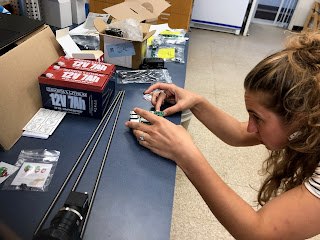CATAIN lives!

It's always a good day when I open my email to a message from the field . Kharis is in Svalbard right now, so I've been watching my email for updates. She's sent me periodic communications about sample collection, sorting larvae, and life at the research station. Aside from the normal ups-and-downs of field work, everything is going pretty well. Except for one thing: CATAIN. CATAIN being lifted out of the fjord by R/V Teisten . Photo by Kharis Schrage. We deployed CATAIN on the seafloor in Kongsfjorden last January, and Kharis was tasked with recovering it this trip. She learned how t o operate our lab's ROV for the recovery operation. She flew all the way up to Ny-Ålesund, Svalbard. She went out on the Kings Bay research boat, Teis ten . And...no dice. Kongsfjorden is very different in the summer compared to the winter. In the winter, the water is crystal clear, even if it is dark out all day. In the summer, though, the glaciers release turbid water into the f...



